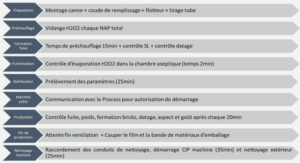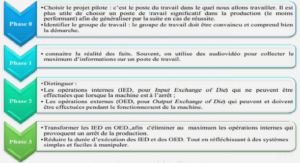Structural health monitoring (SHM) consists of the continuous assessment of structural integrity using embedded systems. Ultrasound has been extensively used, first in the nondestructive evaluation (NDE) field, and then in SHM over the past two decades. Bulk ultrasounds were first used in NDE to characterize material properties, evaluate material thickness, or coating thickness, and to detect defects like volume flaws or composite delamination. Later, plate-guided waves were found to be of great interest for their ability to propagate over long distances in bounded media, including plates, allowing the faster scanning of large surfaces than with conventional ultrasound techniques. The dispersive aspect of plate-guided waves represents, however, a big technical challenge. Moreover, existence of high-order modes tends to limit the choice of frequency to frequencies below the first cut-off frequency to avoid the propagation of high-order modes. Researchers have developed many techniques to limit the undesirable characteristics of guided waves, like limiting the frequency of inspections (Cawley and Alleyne (1996)), dealing with dispersion using the compensation method, or trying to control the generated modes (Ostiguy et al. (2012)).
Despite all these technical challenges, guided-wave NDT techniques are now widely spread and used in industries, such as energy or transport (Cawley et al. (2003) and Wilcox et al. (2003)). Lamb waves were intensively studied and used especially because of their relatively straightforward generation mechanism. In fact, all Lamb modes have a non-zero normal to the plate displacement component at any given frequency, leading to the generation of all possible Lamb modes with a simple normal excitation. On the other hand, researchers had to deal with this ease of generation when they attempted to develop a mode selective transducer (Clarke et al. (2009)). In this work, the author’s objective was to generate the fundamental antisymmetric Lamb mode (A0) at a high level of purity at low frequencies. In order to do so, they started with a conventional thickness poled lead zirconate titanate (PZT) sample, which is a commonly used hard piezoelectric ceramic, thus exploiting the thickness extension vibration mode. To achieve their goal, they used silicon carbide foam as the wear plate of their transducer, in order to suppress the undesired parallel-to-the plate displacement component that comes from the Poisson effect at which, at low frequencies, the fundamental Lamb symmetric (S0) mode is very sensitive. They successfully generated the desired A0 mode at 40 dB over the undesired S0 mode with the use of this adapted wear plate and simple geometric considerations.
Piezo-ceramic Transduction
Piezoelectric ceramic transducers use the previously described piezoelectric effect in order to generate or to detect ultrasound. In the case of the generation of the fundamental SH mode (SH0), a surface shear stress source must be used. In a study by Rajagopal and Lowe (2007), a conventional commercial ultrasonic round shear transducer originally designed for bulk wave applications was used. They demonstrated that using such a transducer to produce the SH0 mode works fine, but it also unfortunately generates the S0 mode at a level of amplitude comparable to the SH0 mode, as well as the A0 mode, at a lower amplitude. Moreover, because of their low ratio of active element size to the wavelengths covered by their bandwidth, such transducers act as point sources. This leads to the generation of perfect dipole patterns, characterized by wide wave field apertures, and to further interferences of the propagating modes. This solution is suited to localized uses of the SH0 mode in well-controlled conditions in order to avoid or control the propagation of the Lamb modes and thus the possible reflections of the Lamb modes that, if not, might interfere with the SH modes.
Kamal and Giurgiutiu (2014) used a commercial shear plate supplied by American Piezo Ceramics (APC) International, Ltd. (americanpiezo.com) to generate SH waves, including highorder modes. The shear plate was made out of PZT and was square in shape. The electric field was applied across the thickness of the plate (third piezoelectric axis) and the shear motion was obtained via the d35 piezoelectric coefficient. The geometry was not optimized to produce the desired waves, and the excitation frequency was chosen according to the imposed supplied geometry. The results showed that, again, this solution is suited for the generation of low-frequency SH waves, but it appears to also generate Lamb modes at very high levels of amplitude. Using such a material in such conditions cannot represent an ideal solution to generate a SH wave at a high level of purity because three vibrational modes other than the desired one are also involved via d₃₁, d₃₂, and d₃₃, which are far from being negligible for hard ceramics like PZT. This aspect was not taken into account in this paper. The same kind of solution was used by Zhou et al. (2015), but they used lead magnesium niobate titanate (PMNT) as the piezoelectric material. They performed a (011) plane cut of the material to obtain their shear plate. This manipulation allowed them to obtain a very high d₃₆ piezoelectric coefficient (-1648 x 10⁻¹² m² N⁻¹), which is at least 1.85 times higher than the resulting d₃₁, d₃₂, and d₃₃, compared to 1.48 higher in the previous study. However, such a design is still not suited to maximize the generation of the SH0 mode.
Another way to use piezoelectric ceramics to produce SH waves is the use of an array of sensors, as discussed by Wilcox et al. (2000). This solution is made of multiple piezoceramic square shear actuators assembled into a chessboard pattern. This way, the central frequency is dictated by the geometry of the array, and a plane wave can be easily generated due to the total length of the array. Generation of both fundamental Lamb modes at the tips of the array was not discussed in this work for this configuration. Again, this solution, due to the number of elements, the alignment complexity, and its bulkiness, is not suited for SHM applications.
INTRODUCTION |






